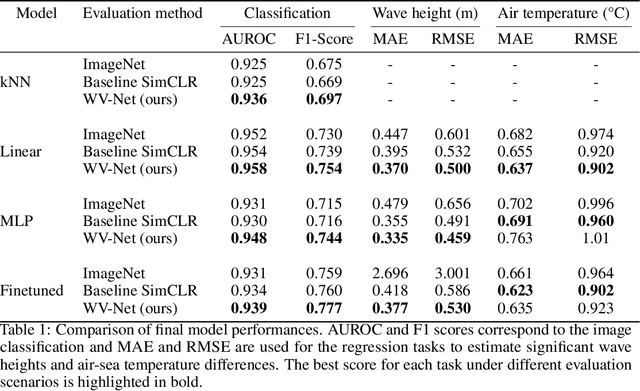Alexis Mouche
LOPS
Efficient Self-Supervised Learning for Earth Observation via Dynamic Dataset Curation
Apr 09, 2025Abstract:Self-supervised learning (SSL) has enabled the development of vision foundation models for Earth Observation (EO), demonstrating strong transferability across diverse remote sensing tasks. While prior work has focused on network architectures and training strategies, the role of dataset curation, especially in balancing and diversifying pre-training datasets, remains underexplored. In EO, this challenge is amplified by the redundancy and heavy-tailed distributions common in satellite imagery, which can lead to biased representations and inefficient training. In this work, we propose a dynamic dataset pruning strategy designed to improve SSL pre-training by maximizing dataset diversity and balance. Our method iteratively refines the training set without requiring a pre-existing feature extractor, making it well-suited for domains where curated datasets are limited or unavailable. We demonstrate our approach on the Sentinel-1 Wave Mode (WV) Synthetic Aperture Radar (SAR) archive, a challenging dataset dominated by ocean observations. We train models from scratch on the entire Sentinel-1 WV archive spanning 10 years. Across three downstream tasks, our results show that dynamic pruning improves both computational efficiency and representation quality, leading to stronger transferability. We also release the weights of Nereus-SAR-1, the first model in the Nereus family, a series of foundation models for ocean observation and analysis using SAR imagery, at github.com/galeio-research/nereus-sar-models/.
WV-Net: A foundation model for SAR WV-mode satellite imagery trained using contrastive self-supervised learning on 10 million images
Jun 26, 2024



Abstract:The European Space Agency's Copernicus Sentinel-1 (S-1) mission is a constellation of C-band synthetic aperture radar (SAR) satellites that provide unprecedented monitoring of the world's oceans. S-1's wave mode (WV) captures 20x20 km image patches at 5 m pixel resolution and is unaffected by cloud cover or time-of-day. The mission's open data policy has made SAR data easily accessible for a range of applications, but the need for manual image annotations is a bottleneck that hinders the use of machine learning methods. This study uses nearly 10 million WV-mode images and contrastive self-supervised learning to train a semantic embedding model called WV-Net. In multiple downstream tasks, WV-Net outperforms a comparable model that was pre-trained on natural images (ImageNet) with supervised learning. Experiments show improvements for estimating wave height (0.50 vs 0.60 RMSE using linear probing), estimating near-surface air temperature (0.90 vs 0.97 RMSE), and performing multilabel-classification of geophysical and atmospheric phenomena (0.96 vs 0.95 micro-averaged AUROC). WV-Net embeddings are also superior in an unsupervised image-retrieval task and scale better in data-sparse settings. Together, these results demonstrate that WV-Net embeddings can support geophysical research by providing a convenient foundation model for a variety of data analysis and exploration tasks.
Two-dimensional structure functions to characterize convective rolls in the marine atmospheric boundary layer from Sentinel-1 SAR images
Mar 04, 2022



Abstract:We study the shape of convective rolls in the Marine Atmospheric Boundary Layer from Synthetic Aperture Radar images of the ocean. We propose a multiscale analysis with structure functions which allow an easy generalization to analyse high-order statistics and so to finely describe the shape of the rolls. The two main results are : 1) second order structure function characterizes the size and direction of rolls just like correlation or power spectrum do, 2) high order statistics can be studied with skewness and Flatness which characterize the asymmetry and intermittency of rolls respectively. From the best of our knowledge, this is the first time that the asymmetry and intermittency of rolls is shown from radar images of the ocean surface.
 Add to Chrome
Add to Chrome Add to Firefox
Add to Firefox Add to Edge
Add to Edge